The Best Ab Exercise for Lower and Upper Abs
November 26 2009
Are crunches the most effective for upper abs? Are there exercises which work the upper and lower abs equally hard? Which is the most effective exercise or the best exercise for upper and lower abs?
A study looked at the most common ab exercises in the gym to answer the above questions. The ab exercises compared in the study were:
Abdominal Crunch
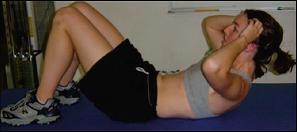
Sit ups
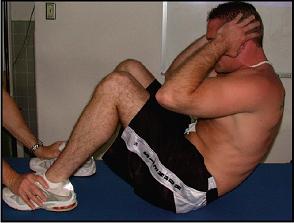
Reverse Ab Crunch
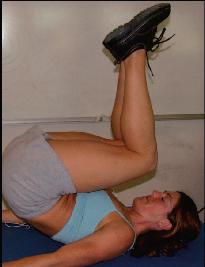
Reverse 30 degree Incline Crunch
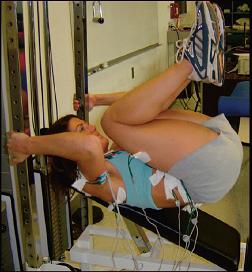
Power Wheel roll-out
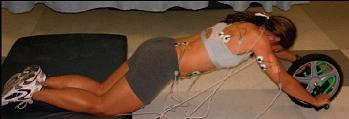
.Hanging Leg Raises with straps
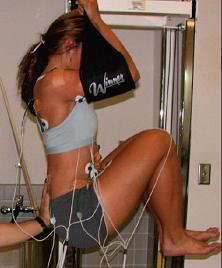
Which was best ab exercise for upper abs?
For upper abs, the Power Wheel roll-out, hanging knee-up with straps,and reverse crunch inclined 30 degrees are much more effective than the crunches, sit ups and flat reverse crunch
Which was the best ab exercise for lower abs?
For lower abs, the Power Wheel roll-out and hanging knee-up with straps
were the most effective compared to the other ab exercises

Chart: The result of EMG analysis for the above ab exercises.
Practical Applications
- The power wheel roll & hanging knee raises are the most effective exercise for both upper and lower abs
- Bent knee sit-up is the least effective among the ab exercises
- Power wheel rollout showed the least stress on low back muscles.
Power wheel roll-out wins!
Reference 1
Related Articles
| Mon November 30, 2009
isn’t there the problem of progressive load on many of these exercises. Perhaps i’m not being creative enough, but how do you attach weights to hanging leg raises with straps? (like you can with crunches)
(Maybe.. you clamp a dumbell between your feet… maybe?)
Anoop | Mon November 30, 2009
Hi Mumford,
Yep, you can clamp a dumbell between your feet.
And it’s a good question: All these exercises will show greater EMG activity if you can increase the load somehow.The EMG shon here is normalized for all the exrcises.
I am not sure how you can overload with the power wheel though. The rest of them you can easily overload with a dumbell.
| Wed December 09, 2009
Thanks! nice article. I have a power wheel in our gym. I will use it from now.I can get my upper and lower abs with one exercise which is great.
Anoop | Tue December 15, 2009
Hi Gymchick,
Thanks.
The bottom line is if you are doing body weight exercises for your abs and if you don’t have the time, you will get your money’s worth if you do hanging leg raises or the power wheel roll out.
As shown, they both hit upper abs and lower abs better than any other body weight ab exercise.
And I don’t think many people should be using weight for abs unless they have a six pack to show. It will make their waist look bigger and make them look more fat.
| Tue May 11, 2010
Hi Anoop,
What about “abdominal muscles have intersegmental nerve stimulation, you are not able to contract one section independent of the other”. So is the muscle shortening that gives one area more involvement or challenge?
Also -what about training abs daily - I read - “train them at least 3 - 5 days per week, with a daily workout being permissible. Unlike other muscles, you rarely fatigue the abdominal muscles enough so that they need an additional day to recover”. and “In practice, it actually makes sense to do some type of abdominal strengthening exercise on a daily basis to try and counteract the excessive tightening of your lower back muscles and hip flexors”.
TRUE??
| Wed May 26, 2010
Try a straight leg raise progression or ankle weights for hanging leg raises.Be mindful of spinal flexion and or reinforcing tight hip flexors though.
A weighted vest, isometric holds, as well as variations from the knees to standing are great ab wheel progressions.
Abdominals do have intersegmental nerve stimulation and you never truely isolate a specific area. Why would you want to anyway? Are nt we learning the greater benefit of training movements instead of muscles.
Remember, you abs function more for spinal stability than for mobility. Spinal flexion taxes the spine much more than your abdominals. Add some core stability movements to your programming and keep your back healthy!
Brett Contraras wrote an awesome article for tmuscle.com on abdominal training. check it out http://bretcontreras.wordpress.com/
Commenting is not available in this channel entry.
>








